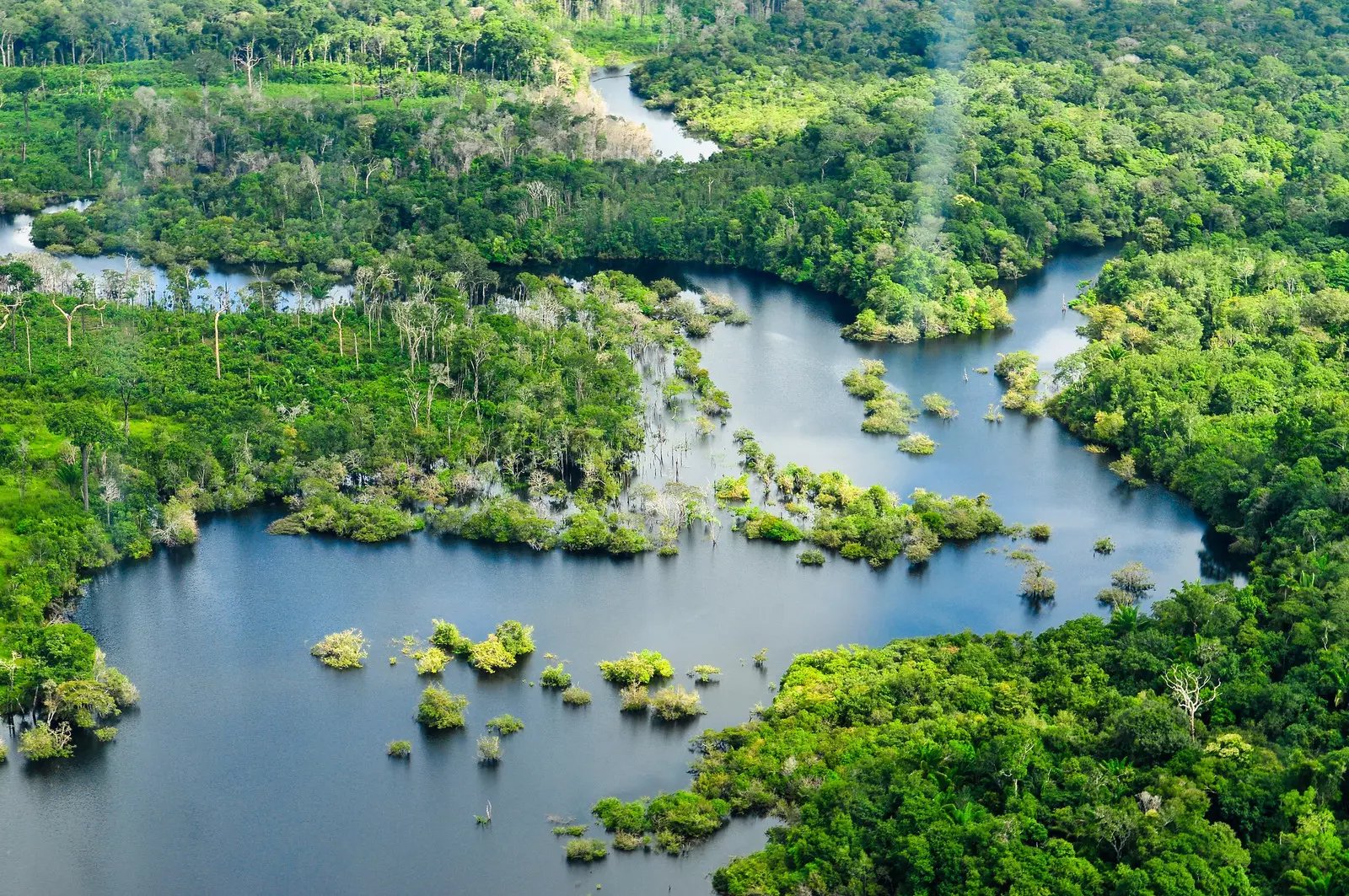The global economy is built on natural capital. Without an abundance of water, soil, and biological diversity, businesses and societies can’t function, much less flourish.
Governments are waking up to the value of such capital. In 2022, they struck a global agreement to reverse nature loss and bring human activities in harmony with the biosphere. Now, countries are working to implement this agreement, known as the Kunming-Montreal Global Biodiversity Framework.
The key to success: Mobilizing trillions of dollars in private financing to support biodiversity and reverse nature loss. Private-sector financing for biodiversity efforts has been stuck at about $13 billion or so annually.
The UK’s “biodiversity compliance market” that entered into effect this month offers a glimpse of one potential way to scale up private financing. Such legally mandated biodiversity credit markets are starting to come online as governments look to reverse nature loss and promote biologically diverse habitats.
Like carbon credits, biodiversity credits are tradable instruments that represent claims on positive nature and biodiversity outcomes. Organizations can use them to offset the damage to natural assets they incur, or to invest in biodiversity gains within or across countries.
“We see a growing number of countries looking at various kinds of biodiversity compliance,” says Simon Zadek, co-CEO of NatureFinance, an initiative focused on aligning global finance with nature-positive outcomes.
“Whether they’re ‘no net loss’ or whether they’re ‘net gain,’ they’re basically all within a single class – which is you’re doing something in the real economy, it has an effect on biodiversity, you’ve got to put up some money to invest in biodiversity in some shape or form to offset what you’ve done.”
Biodiversity Net Gain
England’s biodiversity compliance market, known as Biodiversity Net Gain, or BNG, is part of a wide-ranging effort by lawmakers to ensure that building projects add to, rather than subtract from, the country’s natural habitats.
The policy requires all new developments in England – from housing projects to roads and railways – to deliver at least a 10% gain in biodiversity. That means land developers have to produce a quantifiable increase in overall biodiversity that compensates for and exceeds the habitat damage caused by their activities.
BNG went into effect for large developments on February 12; smaller projects will be phased in in early April. Scotland and Wales are mulling similar policy proposals.
To meet the 10% BNG requirement, developers have three options. First, they are encouraged to nurture habitats on-site. If they cannot produce the necessary gains, they can create or enhance habitats elsewhere on their own lands or buy off-site “biodiversity units.” As a final step to make up for any shortfall, they can buy statutory biodiversity credits from the government.
The dearth of spare land within development sites means that most companies will have to purchase biodiversity units to fulfill their obligations. This heralds good times for England’s “habitat banks” – entities that lease or own land for the purpose of selling biodiversity units to developers. Government analysis suggests the market for biodiversity units is worth £135 million to £274 million ($170 million to $345 million).
The Environment Bank is one organization eager to participate in the new market. Professor David Hill, the bank’s founder and chairman, says that off-site biodiversity units are much more effective at supporting nature than on-site habitats.
“You end up with bigger scale sites that will be good for biodiversity when you aggregate different buyers from different development sites,” he says.
The Environment Bank is supporting over 6,000 acres of habitat creation to underpin high-quality biodiversity units. Hill says the bank is receiving plenty of inquiries from developers and expects sales to accelerate now the rules are in effect.
He predicts that BNG will expand to include the corporate sector, too. That could vastly increase the number of entities drawn into the nature market and lead to a boom in habitat creation and restoration. “It looks like a massive market with great value for Environment Bank,” says Hill, “but more importantly, great value for the natural environment.”
The week after the BNG launch, specialist asset manager Gresham House rolled out “a specialist biodiversity strategy” that will invest in habitat banks created by Hill’s Environment Bank. The strategy aims to deliver “strong financial returns” through “positive environmental and societal impact.” Gresham House is targeting an initial raise of $380 million.
Scaling biodiversity markets
England’s “nature market” is being watched with interest by those who want to expand biodiversity credit markets to new shores, including the International Advisory Panel on Biodiversity Credits.
“They’re trying to figure out if there’s a next generation of financial instruments and markets that can more effectively, and at scale, fund biodiversity restoration and conservation,” says NatureFinance’s Zadek, a member of the group.
Key to this scaling up are mechanisms that allow for the buying and selling of biodiversity credits across borders, says Zadek, something England’s scheme doesn’t permit at present.
“There is an international interest in developing the ability to run these sorts of markets across borders. But at the moment, that simply doesn’t really exist,” says Zadek.
Expanding biodiversity markets may benefit companies’ financial returns, too. A 2023 paper argues that investing in nature should increase GDP relative to business-as-usual by bolstering certain “ecosystem services.” These are natural processes that have economic benefit, such as forests producing trees for timber, or marine habitats providing fish for the food system.
Risks of financialization
Nature markets have their opponents, though. Criticisms of biodiversity credit schemes have much in common with those leveled at the voluntary carbon market: insufficient oversight, poor standards, and all too many opportunities for unscrupulous actors to engage in greenwashing.
Frederic Hache, co-founder of the Green Finance Observatory think tank, is one skeptic. “From a conservation perspective, traditional environmental regulation would be infinitely more effective [than a nature market].”
“The only way to make sense of it is to understand that biodiversity politics are the same as climate politics, and that the goal of offset markets is to divert discussion away from nature destruction to short-term gain and competitiveness,” he says.
The UK government has taken steps to ensure the BNG-driven nature market does not fall prey to the kinds of scandals that rocked the voluntary carbon market last year. It has provided a statutory biodiversity metric and tools that participants must use to calculate the value of habitats for biodiversity net gain. This metric considers the size, quality, location, and type of habitats, among other factors, to determine their value in biodiversity units.
The hope is that by imposing a uniform standard, land managers won’t be able to game the system or sell units that don’t benefit nature. Off-site and on-site habitats for BNG also have to be maintained for at least 30 years, another condition that should limit greenwashing opportunities.
Sophus zu Ermgassen, an ecological economist from the University of Oxford, says the governance arrangements for off-site units are strong, and claims the UK government has learned lessons from international best practice.
There’s a danger that the BNG mature market becomes overly financialized, to the detriment of those actually supporting new and restored habitats, he adds.
Zu Ermgassen runs through the various market players who play important roles in streamlining transactions, but may ultimately reduce the amount of funds that end up with biodiversity projects: the brokers who run habitat banks or connect buyers and sellers to reduce costs; the financial intermediaries that provide financing for institutions that want to develop habitat banks but can’t afford the upfront investment.
“This is where I think the risk of financialization comes in,” he says. “As always, there’s a risk that financial institutions achieve outsized gains just for providing some capital upfront, while land managers do a lot of the work.”
Hache at the Green Finance Observatory shares such concerns. “You have a lot of intermediaries who stand to make a fortune through this asset class,” he says. While the market for biodiversity units may be volatile and prone to abrupt crashes, financiers could skim “fat margins” from buying and selling them, he adds.
Nature investment is still a niche game in the UK and elsewhere, but it could scale up fast. The Environment Bank’s Hill is convinced that engaging private investors is the best way to stop nature loss and promote biodiversity at scale. The not-for-profit model “has simply failed to protect natural capital and nature. It hasn’t worked,” he says.
“We’ve always treated the environment as a charity chase. I think it’s the wrong model in terms of nature conservation,” Hill says. “As soon as you get private investment opportunities into nature, then you’ll see it scale.”
Louie Woodall is a climate finance journalist. He writes the climate adaptation newsletter Climate Proof and contributes to Unpacking Climate Risk, a publication for climate-related financial risk professionals.











